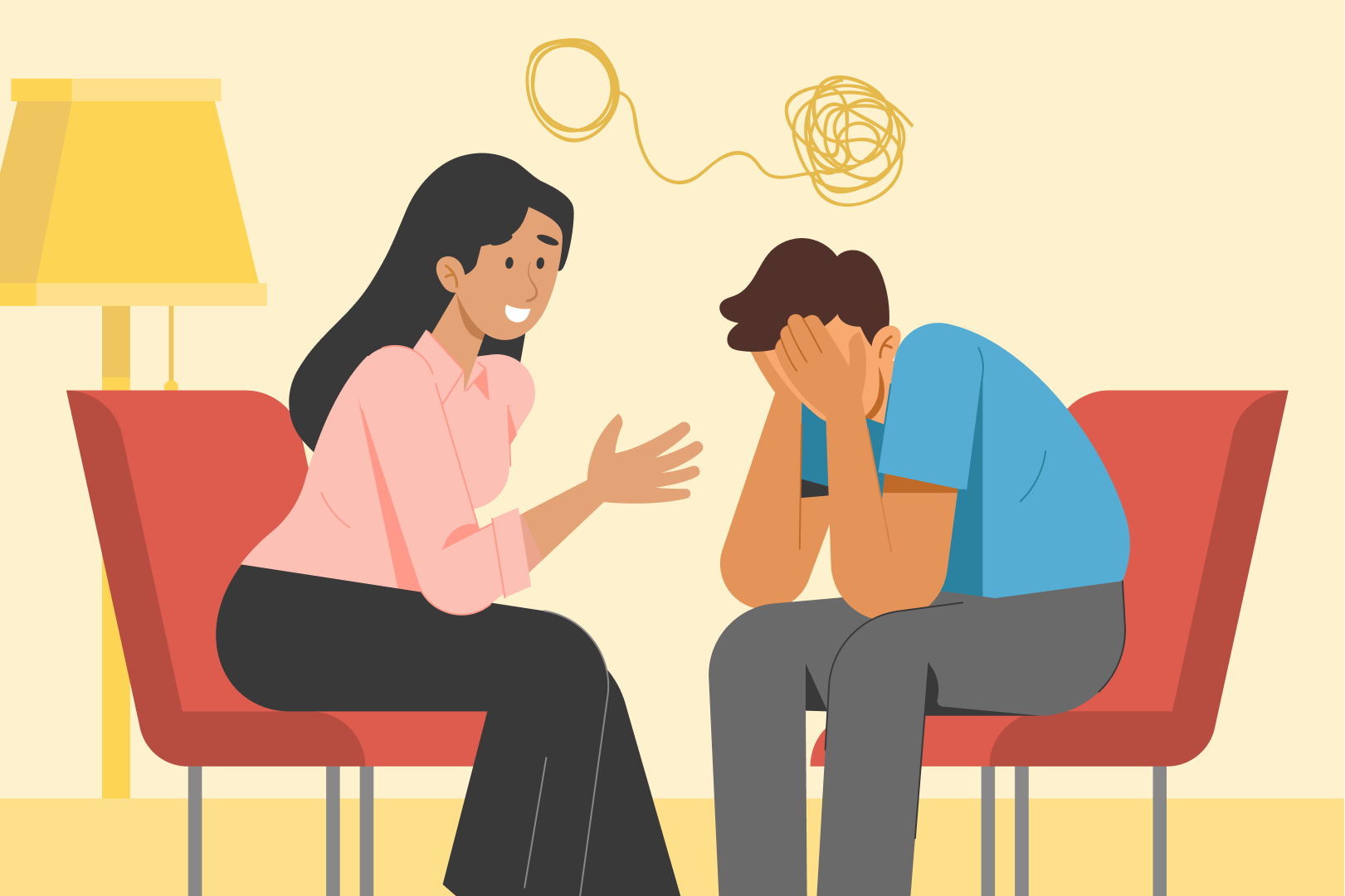It is essential that Teachers learn the art of interacting and communicating with the student effectively especially in this modern digital world.
Building a good classroom environment and healthy student-teacher relation requires continuous and effective communication. It has been seen that classroom management has the maximum impact on student achievement. students cannot learn in a chaotic, poorly managed classroom.
For effective communication that might impact student learning, teachers need to keep in mind :
❖ Clarity in Communication
Communication is both expressive and receptive. Educators should be skilled in listening and understanding the thoughts and ideas of their students and elaborating things clearly. Educators need clarity in communication while talking to their students. They should be able to break down complex things into simple steps. Educators must be able to “read” their students’ minds. Effective communication also includes converting a boring conversation into an interesting one using good presentation and communication skills.
❖ Personalizing Communication with Emotions
A good educator conveys honest affection and commitment to their students. They keep a deep concern about their students’ progress.
A teacher, who is keen to know about their students, learns their name and addresses them with their name. They always try to understand their students’ dream, their biggest fear, hopes and preferences; all this is possible with effective and continuous communication. Teachers must celebrate their student’s success and recognize them for their work; and this is a great way to highlight student’s strengths and create impact on their learning.
❖ Communicating With Parents
A great educator does not only need to communicate with students, but should know the art of communicating with students’ parents as well. They need to be perfect in expressing themselves to parents to collectively work on the students’ progress. Teachers are required to make sure that parents understand their kids’ learning strengths, patterns, problems or behaviour.
Some effective tips on communicating with parents are-
- Build Relationship: It is important to build trust with parents .Building trust with parents is a steady process which many include having to prove to parents that they have their good interest at heart and helping students and letting parents know about it.
- Listen to Parents: There are times that parents have serious questions and concerns about their kids. In those times, try to address their concerns. , even if it’s your mistake, accept it and handle things calmly. Listening to them rather than defending your point is more important here.
- Document Every Communication: It is important to document any communication with parents.Documenting communication means writing down the parent/student name, date, and a brief summary about the conversation.
- Talk Often: Regular and effective communication takes time but it is crucial.
It is tough for teachers who have so much to do, to manage effective communications, but with the growth of technology and available tools the task gets less hectic. Today, educators have various options to communicate with students and parents using technology to meet them where they are active, on their phones.
Use of Technology for Effective Communication between Teachers, Parents and Students
Use of technology makes communication effective and easy. Teachers who use technology have various options to reach out like phone calls, emails, newsletters, e-cards, chat applications, video conferencing as well as social media tools. But organizing all this is not easy either.
There are a number of apps and platforms that enable teacher- student & parent communication.
Online Teaching and Communicating
Communication is the first hurdle for those of us who have been thrust into online teaching.
How do we keep in touch with our students?
Discussion boards, live chats, emails and video calls are the new normal of classroom communication.
To make online class communication effective, teachers need to mix different modes of communication which have their own strengths and weaknesses:
- Text
Composing messages via text is presently the most efficient way to communicate with students online. But that doesn’t mean it’s the best way. Without body language or tone of voice, you will need to go to extra effort to ensure your instructions and feedback do not become too impersonal.
- Video
Videos are a great way to stay connected. Students will feel much closer to you if they can see your face and hear your voice. However, they’ll also need reliable technology for downloading or streaming — so you will want to assess whether this is possible for all members of your class.
- Audio
A quick voice recording is an easy way to provide personal communication to your students. Just ensure that recordings are clear and concise. If you have an important message for the whole class, text might be a more reliable option.
You will have to be prepared for a few technical accidents. They’re totally normal when you’re just settling into teaching online.
Develop a communication strategy
develop a clear communication strategy that your students and their parents can understand. This could go out as a document which includes:
An overview of the channels/methods being used
Make sure you also include information on how to access these. Break it down in simple, bullet-pointed instructions. Never assume parents or students will ‘figure it out’.
How students and parents can contact you
Your options include:
- Email: This is the easiest and most effective way for parents and students to get in touch, although this can translate to a permanently full inbox.
- Telecommunications apps (Skype, Zoom, Teams): These provide all the benefits of a direct phone conversation, without you having to provide your private mobile number.
- Live chats: Schedule regular live Q&A sessions. It reduces the number of duplicate queries, saving you time. However, it is not the ideal forum for parents or students to voice more private concerns.
Remember to set ‘working hours’ in order to preserve your own time. Demand will be high given the newness of the situation.
A routine for communications
Your students will feel much more comfortable with online learning if communication is predictable. Outline when during the week you will be uploading daily activities and posting feedback. You’ll bring back some of the structure associated with a regular school day.
Directions to essential material
Make sure your students and their parents know exactly where to find:
- the teaching sequence or unit overview
- the syllabus (for parent reference)
- worksheets and activities for supplementary revision.
The most common parent and student queries will be answered by these resources, so make sure they are accessible in a clearly designated space.
Relay clear and concise messages
Avoid miscommunication and having to endlessly reissue instructions by making messages tight and to the point. Here are some simple rules to abide by:
Less is more
Bullet points, lists and whitespace are so much better than walls of text. ‘Chunk’ your text visually with paragraphs so it’s easier for students to process — especially if you are dealing with multiple subjects in a single message.
Be clear
Reduce the risk of confusion by cutting back on sophisticated or unnecessary language. Tailor it to your students’ reading level instead.
If you are issuing instructions via video, use some text too. Have a summary of the instructions on a visible whiteboard or piece of paper so that students can extract the essentials.
Use private communication for sensitive topics
If you are delivering sensitive feedback or addressing an individual student issue, do so in a way that is not visible to the rest of the group. Use email, private messaging or schedule an online call (with older students). This builds trust and safety in the online learning space.
Check that students receive your messages
If students aren’t seeing your messages, or they aren’t doing what has been asked, revise your communication strategy to ensure that the message gets through. Ask your students for feedback on what works and what doesn’t.
Convey the right tone of voice
Tone is easy to communicate with voice and video, but it is just as important to replicate in writing. Without it, students will misinterpret your messages — or simply perceive you as flat and robotic. Convey tone by using:
- Emotive language: This prevents your messages from seeming bland and purely instructional.
- GIFs and emojis: Even a simple 😀 lightens the mood.
- Proper language and grammar: Careful writing indicates that time and thought has gone into your communication. No one wants to receive a message full of errors or aggressive all-capital letters.
Remember: Even a two-minute greeting presented via video can set the tone for the day. If you are unsure how to communicate in the right tone, let your students see and hear the message from you directly with a video.
Make your communication personal
Personal communication makes your students feel cared for and closer to you, and it is this bond that will carry you through the challenges of such an unprecedented time.
Keep your communication personal by:
- Using names: This is a simple touch that indicates familiarity and connection.
- Self-disclosure: Let students know how you are finding your time away from the classroom. Introduce them to your pets and the hobbies that keep you busy at home.
- Off topic chat: Set aside a space for general discussion online so that everyone can touch base and feel a sense of togetherness.
Most importantly, be yourself. Make jokes, get pulled onto wild tangents, laugh and do all the little things that make your teaching uniquely yours. The teaching world might be turned on its head, but the connection you have with your students remains the same. They can count on it.
Ten Tips for Communicating with the Teenagers
1. Give Them Opportunities
Rather than sit your teenager students down for a formal talk, it’s better to keep communication channels open all the time.
Encourage them to help you prepare food, and chat as you do so, or make sure that you give them a lift to an activity once a week, to give you a bit of time to talk without pressure.
2. Listen
We all like to be listened to, but many of us don’t take time to really listen to others.
If your teen wants to talk, take time to listen to what they are saying, and look at their body language too.
- Ask why, but don’t make judgements
Pointing out that a particular piece of behaviour was stupid is not the best start to a conversation.
Instead, it is best to assume that the teen had a reason for their actions, and ask them about it. It is important to keep an open mind about why they made that choice, and try to understand their thinking process.
Try to avoid making any judgements about them, and this will help them to avoid judging others.
4. Don’t assume or accuse
Just as with younger children, it is important not to assume that you know what is going on, or what has happened.
In particular, don’t ask leading questions. Instead, ask general questions such as “Will you tell me what’s been happening?”, or “I’m worried that you haven’t been quite your usual self. Is everything OK?”
5. Be there to help
Even though they are trying to establish their own identity, teenagers need to know that you are still there. Use questions such as:
- “Can I do anything to help?” or
- “Is there anything that you would like me to do?”
These types of questions make it clear that you are letting them decide if they want you to be involved.
6. Don’t just tell, let them think things through
Most of us will probably recognise that we learn a whole lot more by making our own mistakes, and thinking things through for ourselves, than we do from being told what to do by someone else. Teenagers are exactly the same.
It is important, as the teacher of a teenager, to have the confidence in them to believe that they can find their own solutions to their problems. Your role is to help them to think things through so that they can do that. This may be with you, or by themselves, but it is important that you give them the space to do so, and make clear that you are available for discussion if necessary.
A very good way to make sure that you’re enabling others to think things through for themselves is to make sure that you ask open-ended questions (that is, questions that do not have a yes/no answer). These often start with ‘How…?’ , ‘What….?’ or ‘Why…?’
7. “Do as I do, not just as I say
You are still a role model for your students. If you want them to behave well,, you need to make sure that your behaviour is appropriate too.If you want them to respect you, they need to also be respected.
8. Pick your battles
Some things are more important than others. Pick your battles so that you win the ones that really matter, and let the others go.
If all you do is criticise, a teen is less likely to be able to distinguish when you are seriously critical, as opposed to just a bit unenthusiastic. Instead, try to be positive about something and find strengths in your students
9. Don’t react to anger with anger or hurt
Remember, you are the adult. It is important and to model the behaviour that you want to see. It is hard to stay calm, but it is vital to do so.
If necessary, take yourself away, explaining why you are doing so. Return to the discussion later, when you are calm.
10. Avoid asking too many difficult questions
You don’t want a teenager to lie to you.
Ideally, you would like them to feel able to talk to you about anything. But that may not be the case, especially if they are doing something that they know you think is wrong,It is therefore better to avoid asking straight questions about difficult subjects, unless you are prepared for them to lie or avoid the question. Just keep asking open questions and keep the communication channels open. Hopefully, they will then come to you when they want to talk.








